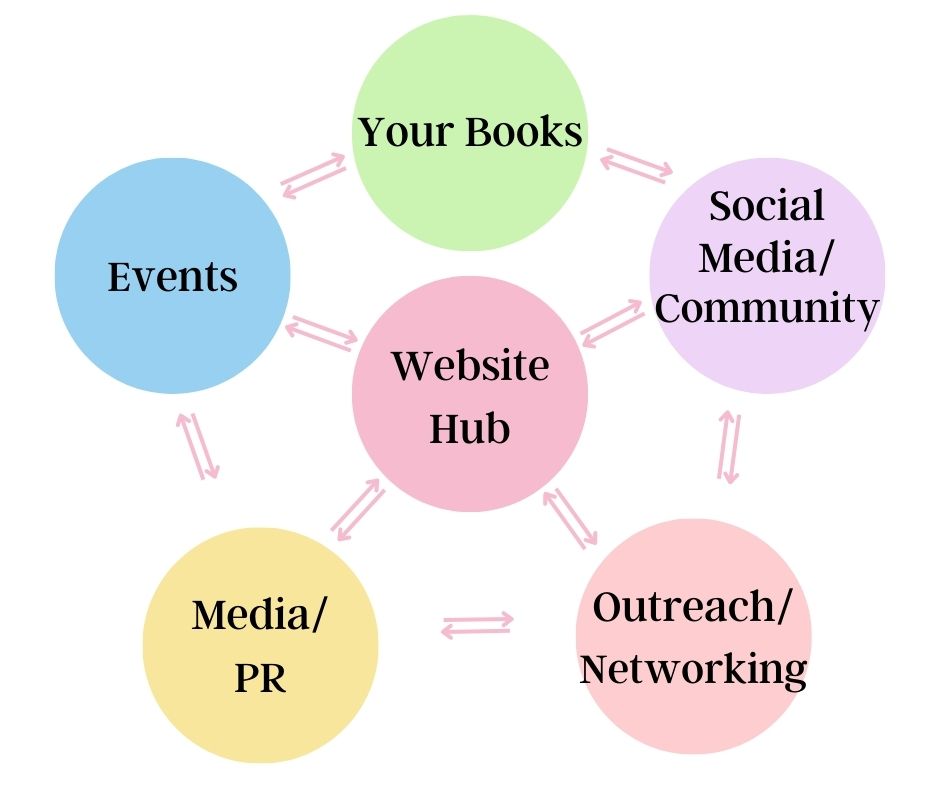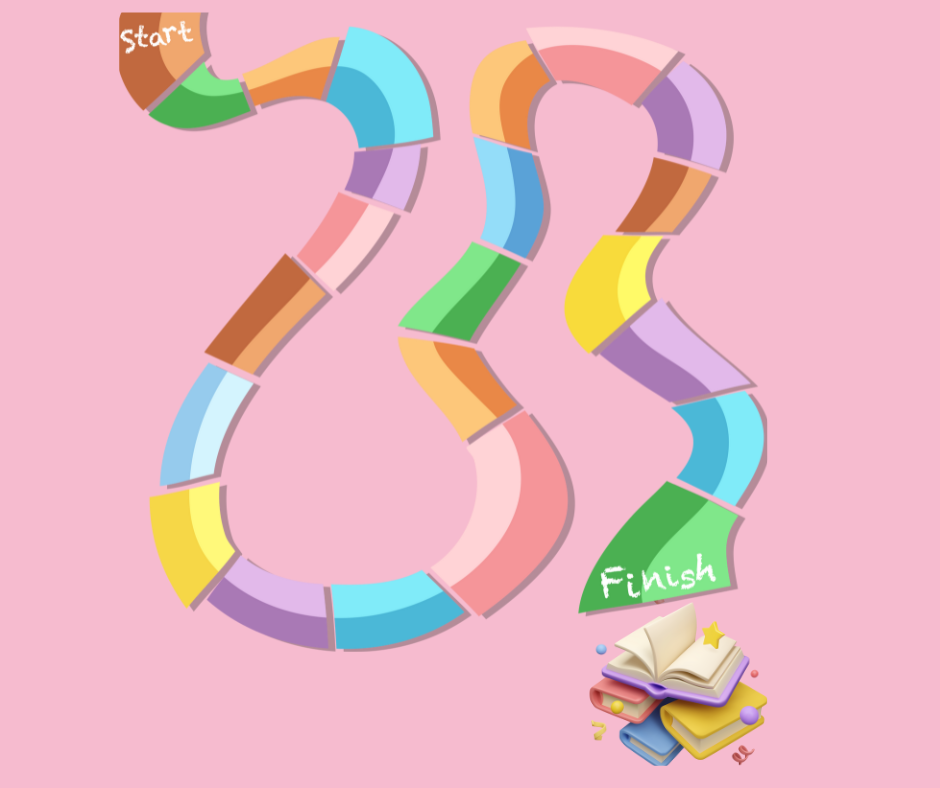Romance Author Website: Why You Need One and How to Get One

I created JennaHarte.com in 2006, well before publishing anything. Coming from a blogging and non-fiction writing background, I knew that if I wanted to capture the attention of a publisher, I needed to show them I was serious about being an author and selling my books. I also understood that by gathering followers in advance of a book release, there would be buyers when the book finally published.
Today, romance authors have many ways to reach and engage readers using social media. The fact that social media is free has made it an ideal way to find and interact with readers. So much so that many many authors have nothing else. But I caution any author against solely using social media for your author hub. Here are potential problems with using social media as your only author center:
- Outages: In October 2021, Facebook and Instagram had massive outages. During that time, ads didn’t run, scheduled posts didn’t post, and authors weren’t able to respond to readers.
- Banning Bots: Every now and then, Facebook and sometimes other platforms decide you’ve done something wrong and ban you. If Facebook and other places made it easy to find out why the bot banned you and how to fix it, this might not be a big deal, but they don’t. You get a link to the rules and it’s up to you to guess why you were banned. Contacting the platforms for a review is hit and miss. I spent over a year asking for a review of a different brand at Facebook. None of the requests were ever answered. (The page was restored when I wanted to run ads). If your page or you are banned, you no longer have access to your followers. In an instant, your ability to let them know about your books is gone.
- Short Shelf Life of Posts: The lifespan of a post varies on platforms, but is about 5 hours on Facebook, nearly nothing on TikTok unless it goes viral, and 21-48 hours on Instagram (See How to Market Your Book without Social Media for Carol J. Michel’s data on social media shelf life). Between that and algorithms that favor some over others, you may have a 5,000 followers but maybe only 50 of them see the post.
Ultimately, you don’t own the real estate on social media and you’re at the whims of the platforms on rules about what you can post, customizations, and uptime.
The answer is to own your platform in the form of a website.
Your website will be the hub of your online presence, allowing you to connect with your readers, promote your books, and establish your brand.
Why an Author Website is Important
A website is a central hub for your brand and helps you establish credibility as a professional writer. It provides a platform to showcase your work, connect with readers, and build relationships with fans. When a reader (or agent or publisher) searches you on the internet, a website brings them to your hub where they can sign up for your email list, buy books, check out social media, learn where you’ll be live at an event and more.
I see a website as the center of your writing business from which all other marketing strategies connect to. In the center is your website hub, and spokes radiate out to community (social media), events, publicity, etc. Below is my marketing wheel to illustrate how all marketing tactics can work together, and how all benefit from a single hub…one place to rule them all.
But there’s more your website can do depending on your goals. Merch, direct sales of books (instead of just through book retailers), courses, subscriptions and more can and should be sold from your website. Yes, you can piecemeal all this, but why send your readers to 5 different places depending on what they want? Make it easy to get everything in one place: Your Website.
What Your Website Should Have On It
Your website doesn’t need to be complicated. In fact, starting out, the less complicated the better as it will be easier to build and keep updated.
Your website should have the following elements:
- Home page: This is the first page readers will see when they visit your site. It should be visually appealing, easy to understand, and provide an overview of what you and your books are about. I’m a HUGE believer in email lists, and I encourage you have your list sign up front and center on this page.
- About page: This page should include your bio, your writing journey, your personal story, or anything that would attract the reader of your books. The trick here is to make it interesting. Infuse your personality, quirks, and other anecdotes.
- Books page: This page should include information about your books, including summaries, cover images, and purchase links. You should consider a page for each book, or at least a page for each series, with each book on it. Admittedly, I’m terrible at keeping this information up-to-date on my site. Don’t be like me! This is what your author page is all about…you and your books.
- Contact page: This page should include a form or email address that readers can use to contact you. Don’t put your email as you’ll make yourself susceptible to spam.
- Social media links: Make sure to include links to your social media accounts so readers can connect with you on other platforms.
- Blog (Optional): A blog can be like social media where you share your writing journey, updates on goings ons, have polls, and a whole lot more. It can offer additional marketing oomph through search engine optimization (SEO) and sharing your blog posts on social media. BUT…only have a blog component if you’re going to blog regularly. Blogs aren’t a requirement. I actually took my blog feature down as I wasn’t posting enough. A dormant blog makes it seem like you’re not around.
Additional pages you may need if you offer anything beyond your books:
- Merch
- Courses
- Special offers
- Subscriptions
Even if the above are hosted elsewhere (e.g. your subscription on Patreon or merch on Shopify), you should have a page about it on your website and then links to the source.
Resources to Build a Website
When buildings a website, there are five basic steps:
1) Buying a domain name.
Even if you use a host or website builder like Wix or Squarespace, I recommend buying your domain separately to make sure you have full ownership of it (as opposed to having the host buy it on your behalf). I use Godaddy for all my domains.
Choose your author or pen name and .com. Since .com is what we think of first, it’s ideal over having another extension especially if you share a name with someone else. You don’t want to sent people to another website because the person didn’t remember you were .info instead of .com.
If your name isn’t available as a .com, consider adding the word “author”. For example, SallySmithAuthor.com or SallySmithRomanceAuthor.com or AuthorSallySmith.com…you get the point. You want to brand your name as a romance author, so you want it in your domain name.
2) Obtaining web hosting or website builder platform
There are a number of website builders available that make it easy for you to create a website, even if you have no coding experience. Here are a few popular options:
- System.io: This isn’t one I’ve heard any author use, but I’m going to use it for a new pen name because it has a really nice free level and lots of bells and whistles I think will be ideal such as direct sales, subscriptions, community building, email, and more.
- Wix: Wix offers a lot of flexibility. It’s easy to use and offers a variety of pre-made templates to choose from.
- Squarespace: Squarespace is a popular website builder that offers a lot of design options. It’s a bit more expensive than Wix, but it’s easy to use and has a lot of great features.
Or take total control…
I have a confession. I’m a WordPress snob. I’ve been using WordPress (self-hosted) since 2010 and love it. Once you learn it, it’s easy to use. The benefit of WordPress over other options is greater ownership of your website, more customization, and more features. Plus, it’s less expensive than using Wix or Squarespace. JennaHarte.com and WritewithHarte.com are both run on WordPress.
It does require a bit more work to set up at WordPress self-hosted site. It can be a bit more technical, although many hosts now will install it for you.
To use WordPress, you’ll need a webhost. I love Momwebs, as its affordable and the tech support is awesome! All my sites are hosted there.
3) Setting up your domain name to work with your web host
Your website host or builder platform will have instructions on how to do this if you buy the domain outside the host or platform. Basically, you get the nameserver information your host or platform builder will give you and give it to the domain registrar so it knows where to send people who use your domain.
4) Installing WordPress or your theme
If you use Wix or Squarespace, you’ll need to select a theme. If you’re going with WordPress, you’ll need to install WordPress (or your host may do it for you) on your site, and then you can choose a theme. In all cases, you’ll be able to find free themes or you can buy them.
I’ve invested in both Themify.me (JennaHarte.com) and Elementor (WritewithHarte.com) for greater customization, but to start out you can use a basic theme until you learn how your building platform works.
You may also have the option for additional features you can add on. For example, you may want your books to scroll across the top. You’ll need to check with your platform for free and paid addons.
With WordPress, the addons are called plugins, and there are a bajillion of them. If there’s something you want your website to do in the fore- or background, there’s likely a plugin that will do it. For example, you can add Patreon or memberships and ecommerce to your WordPress site through plugins.
5) Setting up the site
Once the foundation is in, you need to add your content (About page, contact, etc). In most cases, it’s easy to write directly into the platform much like writing in a Word or Google doc. If you want images, most of these sites have the ability for you to easily upload and use them in your content without knowing HTML. Don’t forget to add your email sign up! Your email service provider will help you create a form script that you can copy and paste into your website.
Creating a professional author website is an important step in establishing your online presence as a romance author and provide a home for all your fans to learn more about and connect with you.









Responses